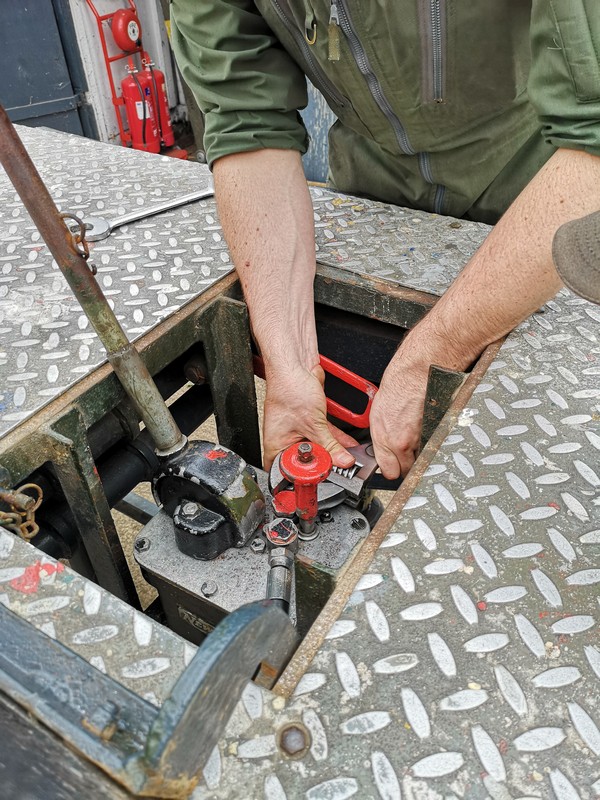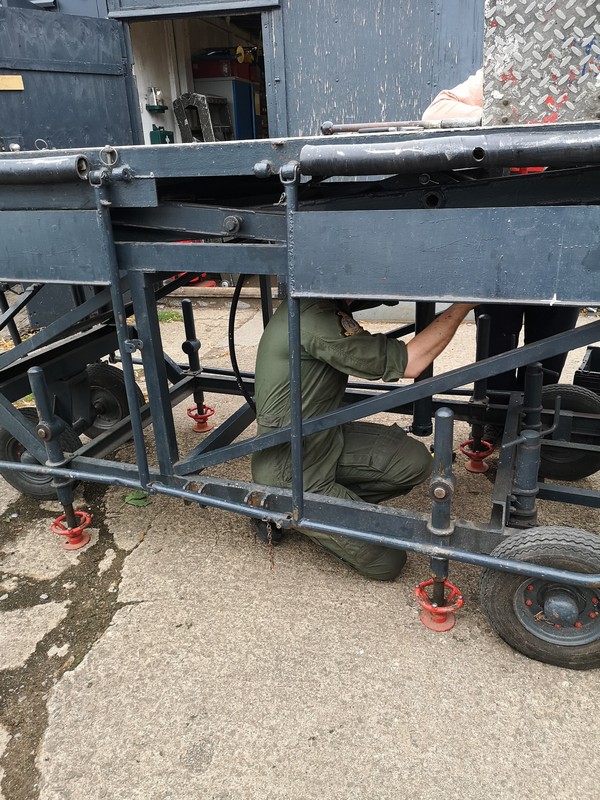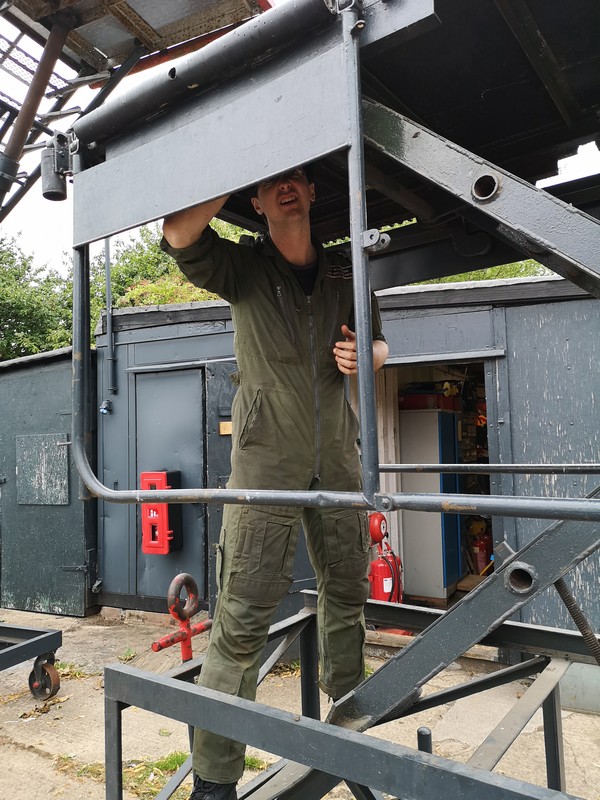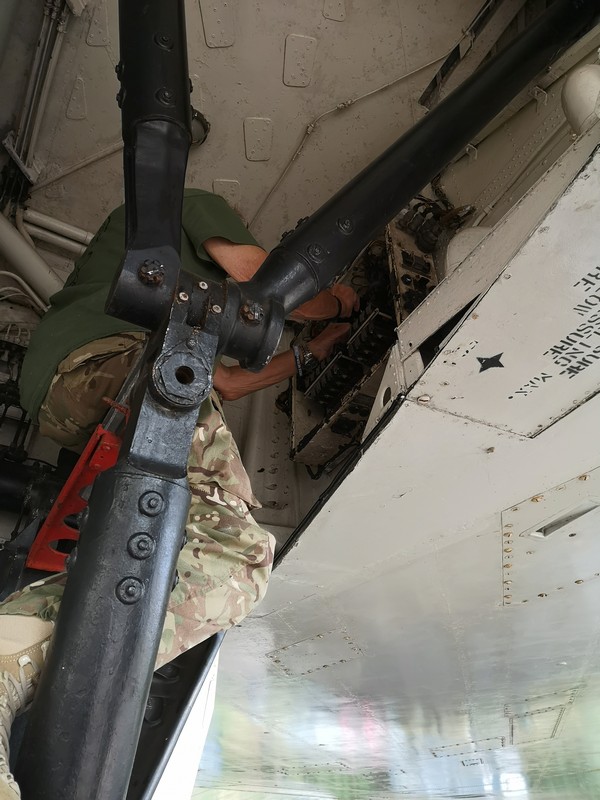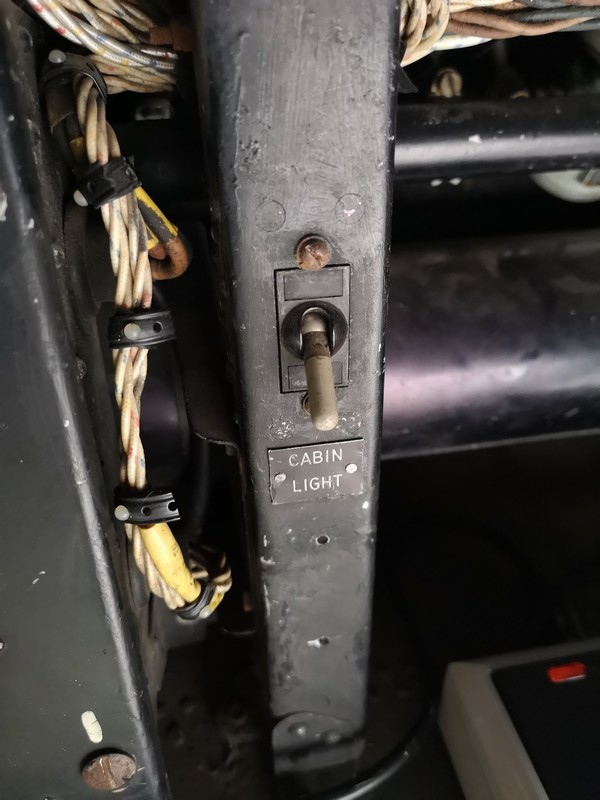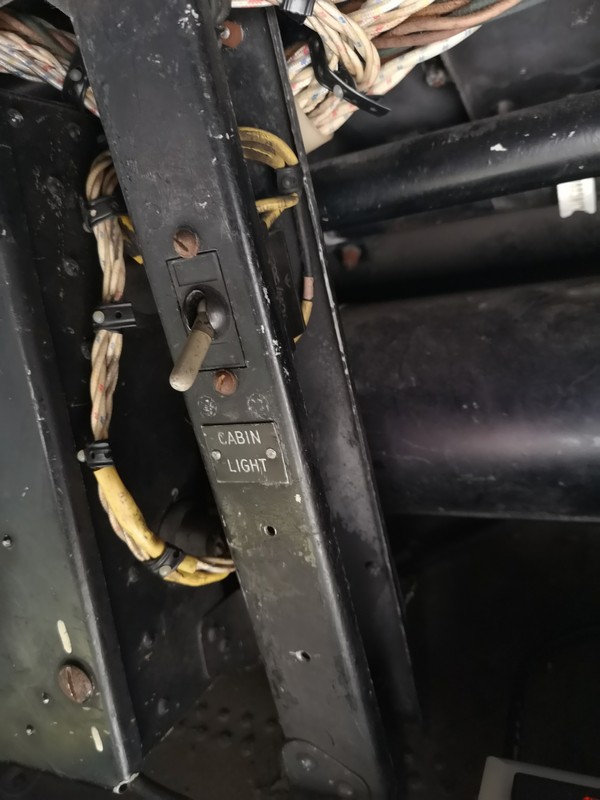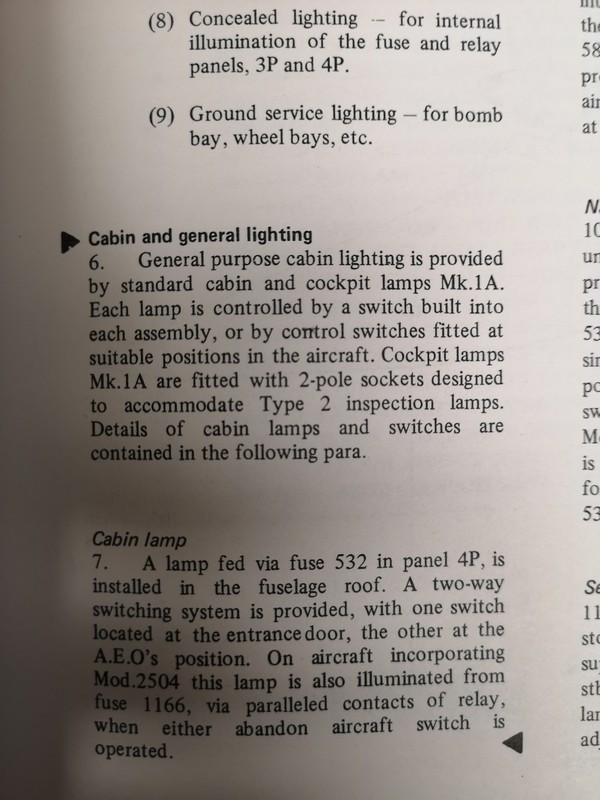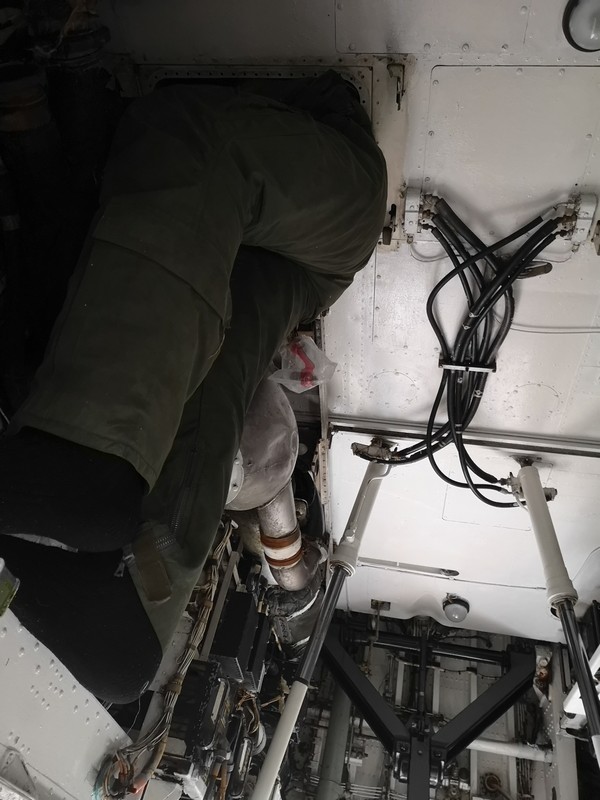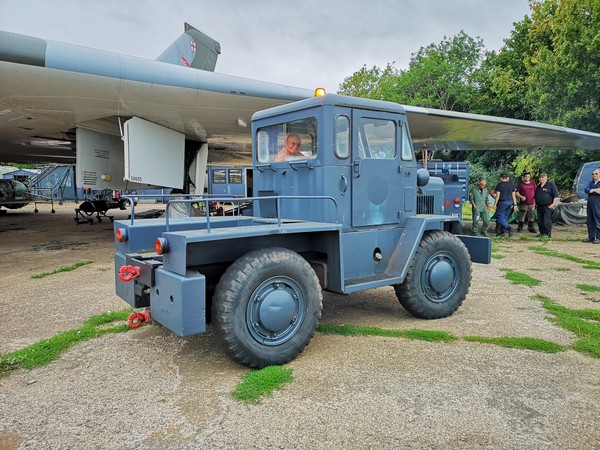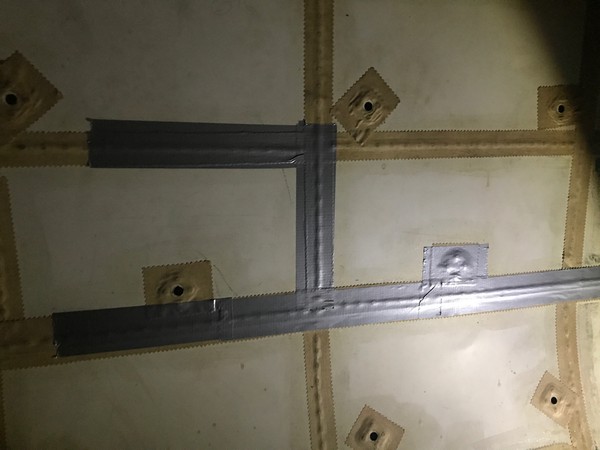With some visits pre booked throughout the day our volunteers made a start on the day’s tasks. First on the list was the reinstallation and testing of the pump on the riser….

The riser was extended to its maximum height and remained there without descending. It was then lowered successfully and is now back in service.
Back with the cabin lighting issue, work continued to identify the cause which is either in the switching or the wiring (and we are certainly hoping it is NOT the latter!) First off, the switch by the crew entrance door (there are two 2-way switches in the circuit) was removed from its mounting, the connections loosened, checked and cleaned and reinstalled. The goal was to also do this with the switch at the AEO station but due to its location, the accessibility of the switch together with time constraints meant that we were only to check the wiring in situ.
The relays (for the fuel gauges) in panels 36 and 37P were checked and cleaned and a contents check was able to be carried out as one of the last jobs of the day. With where these panels are located however, it isn’t the most comfortable of perches!
Our morning visit comprising of members from the Pilots and Friends of Rochester Airport, who had flown in to Wellesbourne, were shown around the aircraft and given a systems demo.
Aircraft battery maintenance was carried out during the day and the Coleman starter motor received some attention. It was stripped down and cleaned and its refusal to work seems to have been down to water ingress. After reassembly and mounting back in the Coleman, it was then given a shakedown on the Taxiway.
The SABT (Standard Airfield Bomb Trolley) work continued with more done on the creeper gear which are now nearing a position to be refitted.
We have begun installation of the replacement number 1 fuel tanks, despite the heat in them (the aircon unit had to be deployed) the tank enclosures received a good clean and preparation work was undertaken – within the enclosures the rows of rivets and the tank fixing rivets needed taping over. This was originally done with glue and linen that was cut with pinking shears, a flashback to WW1, but in this instance a more modern alternative was used (good old bodge tape!) to replace the worn out tape. We will continue working towards the reinstallation of the tanks over the coming weeks.
Thank you to Matt and James for these pictures

